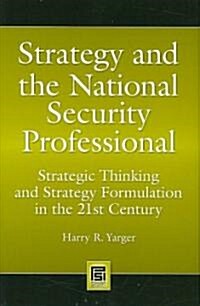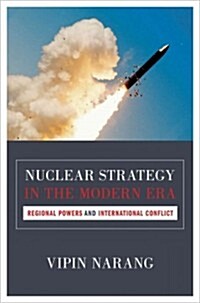
Strategy and the national security professional: strategic thinking and strategy formulation in the 21st century
- 개인저자
- Harry R. Yarger
- 발행사항
- Westport, Conn.: Praeger Security International, 2008
- 형태사항
- viii, 180 p. : ill.; 25cm
- ISBN
- 9780313348495
- 청구기호
- 392.17 Y28s
- 서지주기
- Includes bibliographical references (p. [163]-174) and index
소장정보
| 위치 | 등록번호 | 청구기호 / 출력 | 상태 | 반납예정일 |
|---|---|---|---|---|
이용 가능 (1) | ||||
| 1자료실 | 00015252 | 대출가능 | - | |
- 등록번호
- 00015252
- 상태/반납예정일
- 대출가능
- -
- 위치/청구기호(출력)
- 1자료실
책 소개
The twenty-first century security environment is both promising for and threatening to the national security interests of the nation state. Policymakers and professionals within governmental departments and agencies, both civilian and military, who are responsible for protecting and advancing the interests of the United States, are confronted with a strategic environment that is much more volatile, uncertain, complex, and ambiguous than that faced by their twentieth-century predecessors. Strategy and the National Security Professional: Strategic Thinking and Strategy Formulation in the 21st Century is meant to be a single-source reference for national security professionals, political appointees in the security realm, and others who participate in the formulation, evaluation, and execution of strategy, in addition to those who study and follow national security debates.
The book does not propose a new strategy or critique current strategy; rather, it offers a perspective and process for disciplined strategic thought in regard to all strategy. It is thorough in its explanation of the nature of the strategic environment, offering a clear and comprehensive theory of strategy and a practical framework for thinking about this environment and formulating effective strategy. Written from a U.S. perspective, it helps the reader understand both the internal and external aspects of the strategic environment that make strategy formulation and execution so difficult for the nation state, particularly in a democracy. With the proper environmental assessment and appraisal, it argues, the key strategic factors can be identified and appropriate strategy can be formulated in a rational expression of ends, ways, and means. The book then moves to demonstrate to the reader how to develop and clearly articulate the objectives, concepts, and resources in strategy, as well as how to avoid common errors and pitfalls in strategy formulation. Fiannly, it offers practical tests for determining the validity of a particular strategy and ways in which to consider and articulate risk. While the book is focused on the national security practitioner, it has application to the student in international relations or national security studies who seeks a career in national service.
목차
Preface Chapter I: Introduction Chapter II: Policy, Strategy, Planning and Strategic Thinking Chapter III: A Theory Stated: Strategys Logic Chapter IV: The Strategic Environment Chapter V: Theory in the Real World Chapter VI: The International Environment Chapter VII: The Domestic Environment Chapter VIII: The Strategic Appraisal Chapter IX: Strategy Formulation Chapter X: Strategys Paradigm: Theory and Process Restated Chapter XI: Concluding Thoughts Index



